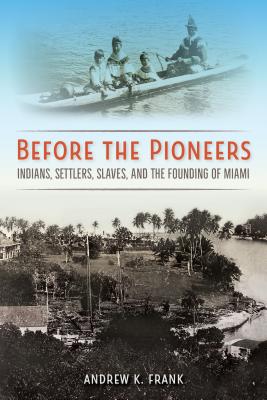Expedite your nonfiction book discovery process with Readara interviews, summaries and recommendations, Broaden your knowledge and gain insights from leading experts and scholars
In-depth, hour-long interviews with notable nonfiction authors, Gain new perspectives and ideas from the writer’s expertise and research, Valuable resource for readers and researchers
Optimize your book discovery process, Four-to eight-page summaries prepared by subject matter experts, Quickly review the book’s central messages and range of content
Books are handpicked covering a wide range of important categories and topics, Selected authors are subject experts, field professionals, or distinguished academics
Our editorial team includes books offering insights, unique views and researched-narratives in categories, Trade shows and book fairs, Book signings and in person author talks,Webinars and online events
Connect with editors and designers,Discover PR & marketing services providers, Source printers and related service providers

Before the Pioneers: Indians, Settlers, Slaves, and the Founding of Miami
History > United States - State & Local - South (AL,AR,FL,GA,KY,LA,MS,NC,SC,TN,VA,WV)
- University Press of Florida
- Hardcover
- 9780813066059
- 9 X 6 X 0.56 inches
- 0.95 pounds
- History > United States - State & Local - South (AL,AR,FL,GA,KY,LA,MS,NC,SC,TN,VA,WV)
- (Single Author) Asian American
- English
Readara.com
Book Description
Formed seemingly out of steel, glass, and concrete, with millions of residents from around the globe, Miami has ancient roots that can be hard to imagine today. Before the Pioneers takes readers back through forgotten eras to the stories of the people who shaped the land along the Miami River long before most modern histories of the city begin.
Andrew Frank begins the chronicle of the Magic City's long history 4,000 years ago when Tequesta Indians settled at the mouth of the river, erecting burial mounds, ceremonial centers, and villages. They created a network of constructed and natural waterways through the Everglades and trade routes to the distant Calusa on the west coast. Centuries later, the area became a stopover for Spanish colonists on their way to Havana, a haven where they could shelter from storms and obtain freshwater, lumber, and other supplies. Frank brings to life the vibrant colonies of fugitives and seafarers that formed on the shores of Biscayne Bay in the eighteenth century. He tells of the emergence of the tropical fruit plantations and the accompanying enslaved communities, as well as the military occupation during the Seminole Wars. Eventually, the small seaport town flourished with the coming of pioneers like Julia Tuttle and Henry Flagler who promoted the city as a place of luxury and brought new waves of residents from the North.
Frank pieces together the material culture and the historical record of the Miami River to re-create the fascinating past of one of the world's most influential cities.
Author Bio
Dr. Andrew Frank is an ethnohistorian who specializes on the history of the Florida Seminoles and the Native South. His research has been supported by grants and fellowships from institutions that include the American Philosophical Society, American Historical Association, Newberry Library, and Huntington Library.
Dr. Frank is currently writing a book-length manuscript on the history of the Florida Seminoles tentatively entitled Those Who Camp at a Distance: The Seminoles and Indians of Florida.
He is the author of Before the Pioneers: Indians, Settlers, Slaves, and the Founding of Miami (University Press of Florida, 2017). This book explores the 2000 years of continuous human occupation at the North Bank of the Miami River—a history that connects the ancient Tequesta with the 20th-century development of south Florida. The North Bank’s history includes the stories of Tequesta and Seminole Indians, Spanish missionaries, African slaves and white slaveholders, Bahamian wreckers, outlaws, runaways, American soldiers, and others. In exploring this often ignored past,
Before the Pioneers explains how Henry Flagler, Julia Tuttle, and the other so-called “pioneers” of the late nineteenth century chose the site for modern Miami in part as a result of the legacies of the earlier settlers.
He is also the author of Creeks and Southerners: Biculturalism on the Early American Frontier (2005), a volume that explores race and identity in the late eighteenth and early nineteenth centuries. His other books include The Routledge Historical Atlas of the American South (1999), The Seminole (History and Culture of Native Americans) (2011), and Borderland Narratives: Exploring North America's Contested Spaces, 1500-1850 (2017).
He has published more than two dozen book chapters and journal articles. Recent articles and books chapters include: “Red, Black, and Seminole: Community Convergence on the Florida Borderlands, 1780-1840,” in A. Glenn Crothers and Andrew K. Frank, eds., Borderland Narratives: Exploring North America's Contested Spaces, 1500-1850 (2017); “Creating a Seminole Enemy: Ethnic and Racial Diversity in the Conquest of Florida,”
Florida International University Law Review 9 (2014): 277-293; “Preserving the Path of Peace: White Plumes and Diplomacy during the Frontier Panic of 1849-1850,” Journal of Florida Studies 1 (2013); “Authenticity for Sale: The Everglades, Seminole Indians, and the Construction of a Pay-Per-View Culture,” in Karen L. Cox, ed., Destination Dixie: Tourism and Southern History (2012); “The Return of the Native: Innovative Traditions in the Southeast,” in The Old South’s Modern Worlds: Slavery, Region, and Nation in the Age of Progress, edited by L. Diane Barnes, Brian Schoen, and Frank Towers (2011).
Research Interests
Native American, Florida, U.S. South, Early U.S.
Source: Florida State University
Community reviews
No Community reviews




